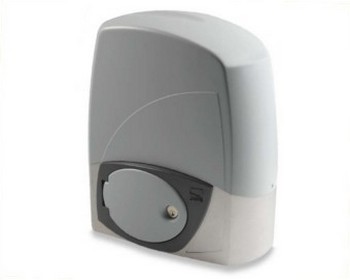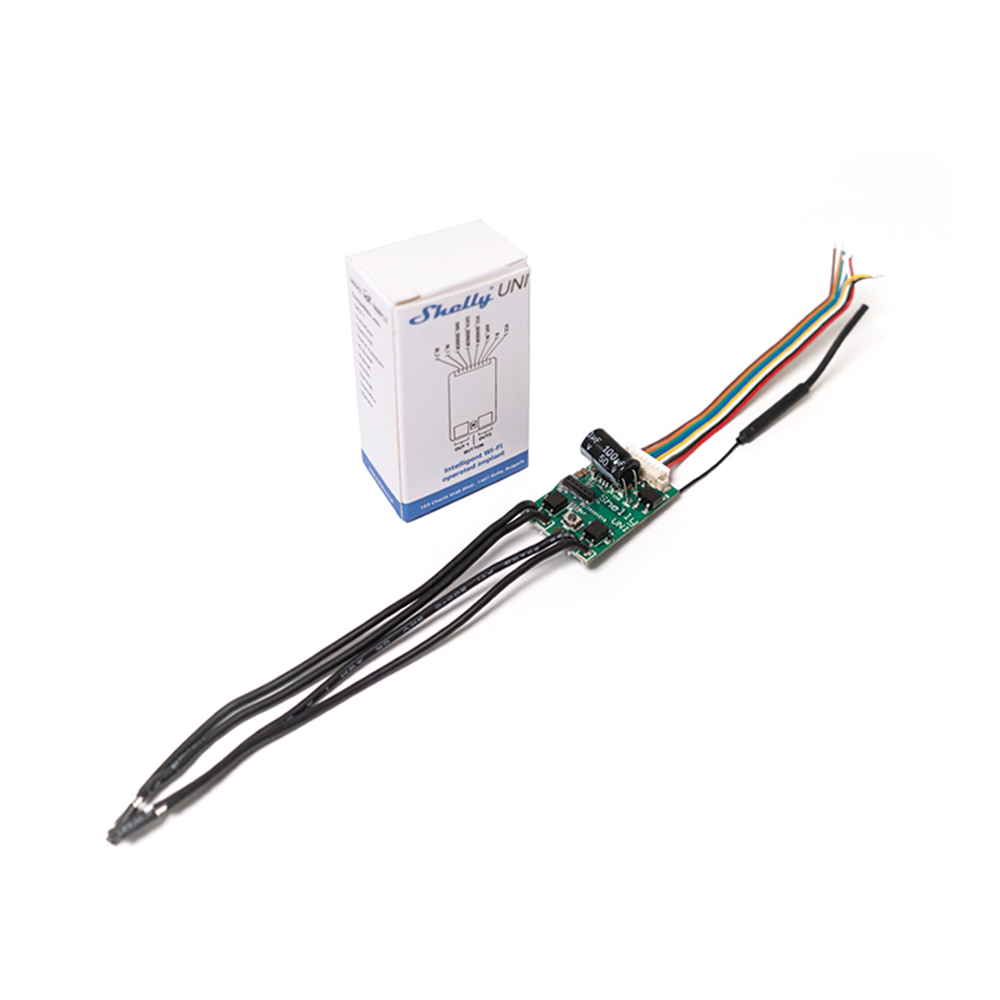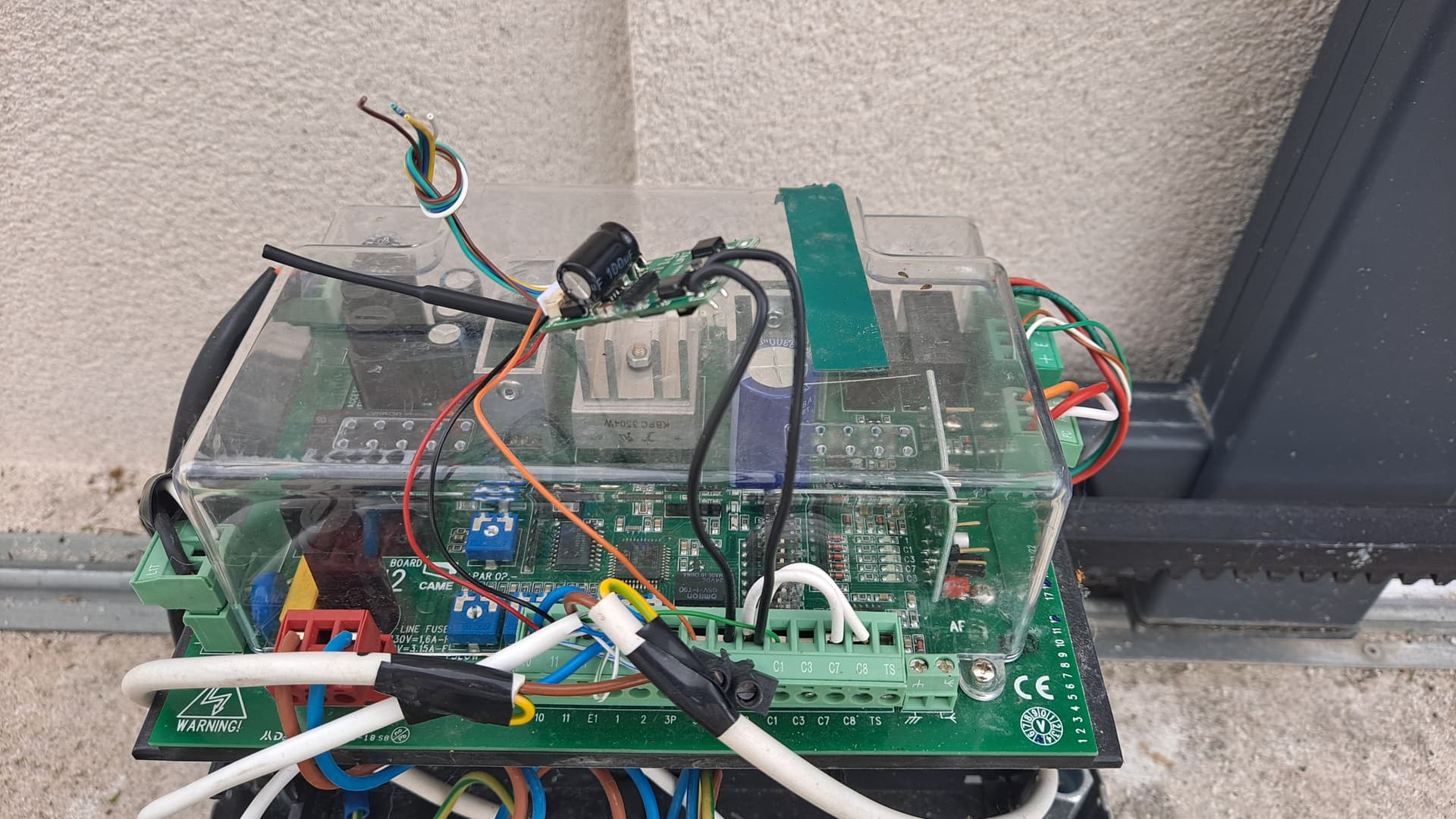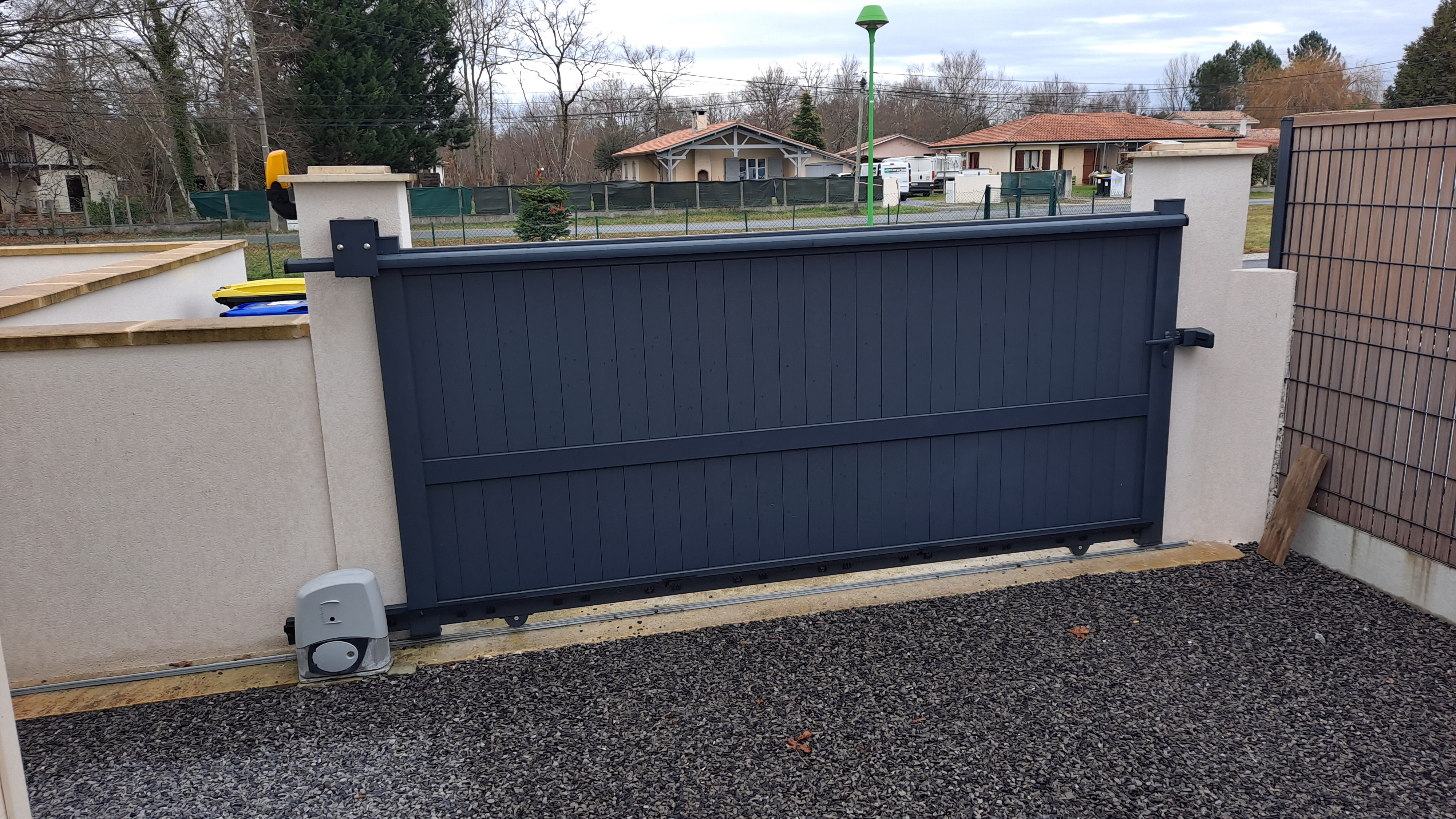Since building my house, I’ve been passionate about automating everything. Today, I’m excited to share my latest project: automating my gate.
Implementation Guide
Hardware Selection
I chose the CAME BX-243 gate opener, which doesn’t support home automation natively.

While CAME products are slightly more expensive than alternatives, their equipment is known for superior build quality and reliability.
The installation process can be challenging for first-timers, but with proper attention to detail, you can have your gate fully operational within a few hours.
Automation Requirements
When planning the automation, I established several key criteria:
- Home Assistant compatibility
- User-friendly configuration
- Local operation (no cloud dependency)
- Open-source based solution
- Compact size to fit within the gate control box
After extensive research, I discovered the perfect solution:

Shelly UNI on Amazon - ~15€
Wiring Configuration

| Shelly | CAME |
|---|---|
| VCC | 10 |
| N | 11 |
| IN_1 | 5 |
| OUT1 GND | 2 |
| OUT1 AC/DC | 7 |
Final installation:

Firmware Installation
While the device works out of the box, I chose to flash it with ESPHome for better integration. Here’s the process:
- Connect the device to your network
- Flash with Tasmota using mgos-to-tasmota
- Flash with Tasmota minimal firmware (http://ota.tasmota.com/tasmota/tasmota-minimal.bin.gz)
- Generate an ESPHome binary using the following configuration in your Home Assistant ESPHome addon:
esphome:
name: portail
esp8266:
board: esp01_1m
# Enable logging
logger:
# Enable Home Assistant API
api:
encryption:
key: "your_encryptionkey"
ota:
password: "your_password"
wifi:
ssid: !secret wifi_ssid
password: !secret wifi_password
# Enable fallback hotspot (captive portal) in case wifi connection fails
ap:
ssid: "Portail Fallback Hotspot"
password: "your_password"
captive_portal:
web_server:
port: 80
# Input
#GPIO12 (1)
#GPIO13 (2)
# Output (Relay)
# GPIO04 (2)
# GPIO15 (1)
binary_sensor:
- platform: gpio
id: gate_sensor
name: "Gate Sensor"
pin: GPIO12
filters:
- delayed_on_off: 50ms
switch:
- platform: gpio
pin: GPIO15
name: "Gate Switch"
icon: "mdi:gate"
id: gate_switch
on_turn_on:
- delay: 500ms
- switch.turn_off: gate_switch
cover:
- platform: template
name: "Portail"
icon: "mdi:gate"
device_class: gate
lambda: |-
if (id(gate_sensor).state) {
return COVER_CLOSED;
} else {
return COVER_OPEN;
}
open_action:
- switch.turn_on: gate_switch
close_action:
- switch.turn_on: gate_switch
stop_action:
- switch.turn_on: gate_switch
optimistic: true
assumed_state: false
With this setup, you can now control your gate and monitor its status through your preferred home automation system.

That’s it! Your gate is now fully automated and integrated with Home Assistant.
